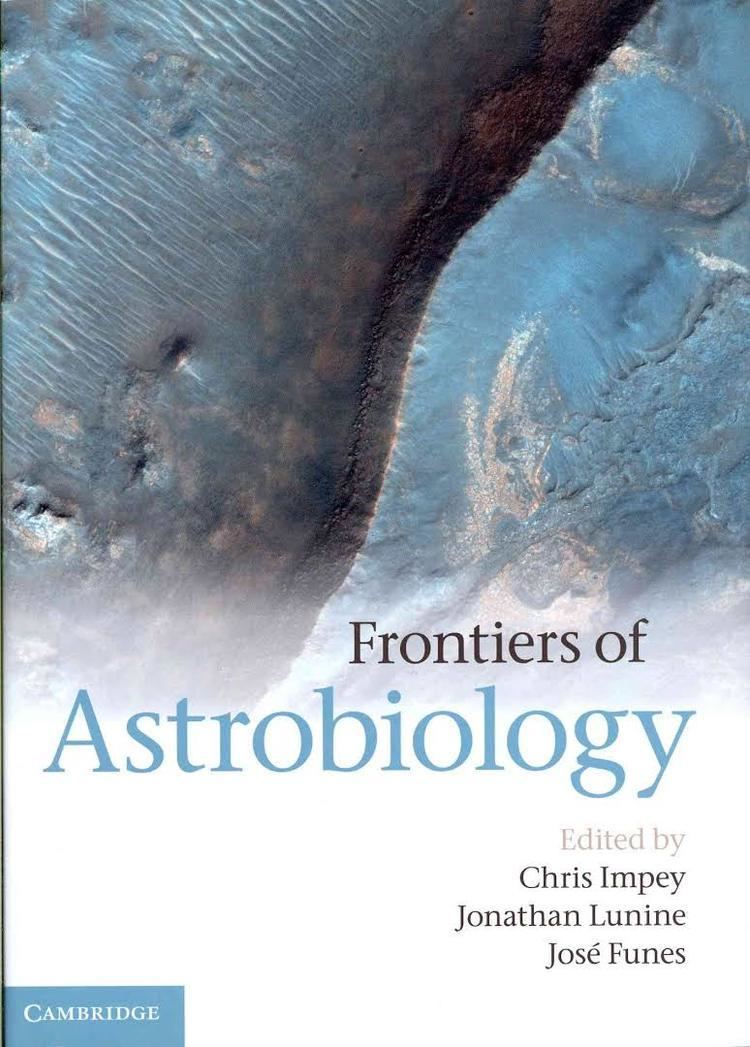9.4 /10 1 Votes
Pages 331 Preceded by How It Began Originally published 2012 Page count 331 Subject Astronomy | 4.7/5 Goodreads ISBN 978-1107006416 Followed by Dreams of Other Worlds Genre Non-fiction | |||||||||||||||||||||||||||||||||
 | ||||||||||||||||||||||||||||||||||
Publication date December 28, 2012 (hardcover) Media type Print (hardcover) and electronic (e-book) Publisher Cambridge University Press Similar Chris Impey books, Other books | ||||||||||||||||||||||||||||||||||
Frontiers of Astrobiology is a non-fiction book edited by the astronomers Chris Impey, Jonathan Lunine, and José Funes that summarizes the state of our understanding of life on Earth, the search for exoplanets, and the prospects for life elsewhere. The chapters derive from a conference at the Pontifical Academy of Sciences in 2009. The book was published as a hardcover by Cambridge University Press in 2012.
Summary
Frontiers of Astrobiology is a non-fiction book edited by astronomers Chris Impey, Jonathan Lunine, and José Funes that consists of articles on the subject of astrobiology. The subject matter ranges from the origin and history of life on Earth to the habitability of the Solar System and the search for extrasolar planets or exoplanets. The talks stemmed from a conference hosted by the Pontifical Academy of Sciences in the Vatican in 2009, and the book was published as a hardcover by Cambridge University Press in 2012. It begins with a welcoming address by Cardinal Giovanni Lajolo, the emeritus President of the Pontifical Commission for Vatican City State and emeritus President of the Governorate of the Vatican City State.
The first part of the book contains an introduction from Cardinal Lajolo and an overview of astrobiology by John Baross and Chris Impey. This is followed by Steven Benner and Paul Davies discussing progress on a general theory of life. Then, Shelley Copley and Roger Summons summarize the emergence of metabolism and life in the first billion years of the Earth’s history, and Sean Raymond and Willy Benz discuss the theory of planet formation, as informed and modified by recent discoveries of exoplanets.
The next set of articles goes into more detail on the history of life on Earth, beginning with Frances Westall describing Earth in the Archean era. Then James Kasting and Joe Kirschvink discuss the evolution of a habitable planet. Eric Gaidos and Andrew Knoll take the story of life from the Dark Ages to the evolutionary renaissance in the Cambrian explosion about half a billion years ago.
Habitability of the Solar System is covered in the next section of the book. Armando Azua-Bustos, Rafael Vicuna, and Raymond Pierrehumbert speculate about early Mars, which is thought to have had physical conditions much more hospitable for life than present day Mars. Athena Coustenis and Michel Leblanc talk about the most habitable moons of Jupiter and Saturn: Europa and Titan, respectively. Then, Julie Castillo-Rogez and Jonathan Lunine consider even smaller habitable worlds, such as Enceladus.
The final section of Frontiers of Astrobiology looks at exoplanets and the search for intelligent life in the universe. It starts with a discussion of the methods of searching for and discovering exoplanets by Sara Seager. Christophe Lovis and Dante Minitti follow this with a review of known exoplanets and their properties. Then, Giovanna Tinetti describes the methods used to characterize exoplanet atmospheres. Finally, Jill Tarter and Chris Impey summarize the status and methodology of the search for extraterrestrial intelligence (SETI), which is entering its second half century.
